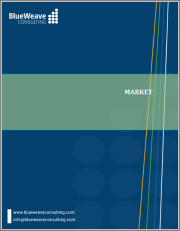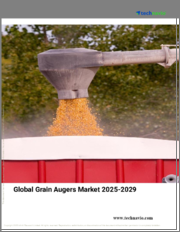
|
시장보고서
상품코드
1310402
일본의 농업기계 시장 : 동향 분석, 기회, 예측 보고서(2019-2029년)Japan Agricultural Machinery Market, By Type ; By Automation ; By End User (Original Equipment Manufacturers, Aftersales), Trend Analysis, Competitive Landscape & Forecast, 2019-2029 |
||||||
일본의 농업기계 시장 규모는 2023-2029년 3.7%의 CAGR로 안정적 성장 전망
일본의 농업기계 시장은 기술 발전, 첨단 농업 기술에 대한 수요 증가, 정부 지원 및 보조금, 농업 생산성 향상 필요성, 효율성 향상과 노동력 의존도 감소를 위해 기계화가 필요한 농업 인구의 고령화 등으로 인해 성장하고 있습니다.
전략 컨설팅 및 시장 조사 전문 기업 BlueWeave Consulting은 최근 조사에서 일본의 농업기계 시장 규모가 2023-2029년 예측 기간 동안 연평균 3.69%의 성장률을 보일 것으로 예상했습니다. 첨단 자동화 농업기계에 대한 수요 증가, 농업기계 기술 혁신, 농업 현대화를 지원하는 정부 정책이 일본 농업기계 산업의 성장을 촉진하는 주요 요인으로 작용하고 있습니다. 일본 농업 인구의 고령화는 노동력 절감 장비에 대한 수요를 창출하고, 친환경적이고 에너지 효율이 높은 농업기계에 대한 관심은 수요를 창출하고 있습니다. 정밀 농업 기술의 활용과 사물인터넷(IoT) 기술의 농업기계에 대한 접목은 시장 확대에 박차를 가하고 있습니다.
이 보고서는 일본 농업기계 시장의 성장 잠재력, 향후 동향 및 통계에 대한 정보를 제공하기 위해 상세한 분석을 제공합니다. 또한 전체 시장 규모 예측을 촉진하는 요인에 초점을 맞추고 있습니다. 이 보고서는 일본 농업기계 시장의 최신 기술 동향과 의사결정자가 건전한 전략적 의사결정을 내릴 수 있는 업계 인사이트를 제공할 것을 약속합니다. 또한 시장 성장 촉진요인, 과제 및 경쟁력에 대해서도 분석합니다.
목차
제1장 조사 체계
제2장 주요 요약
제3장 일본의 농업기계 시장에 관한 인사이트
- 업계의 밸류체인 분석
- DROC 분석
- 성장 원동력
- 첨단 농업기계 도입 촉진을 위한 정부 지원·보조금
- 고품질 농산물에 대한 수요 상승
- 성장 억제요인
- 소규모 농가에서 고액의 초기 비용이 장벽이 된다
- 세분화된 토지 소유권
- 기회
- 스마트 농업 기술 도입
- 지속가능한 농업 실천
- 과제
- 한정적인 농장 통합
- 규제 컴플라이언스
- 성장 원동력
- 기술 진보/최근의 개발
- 규제 체계
- Porter's Five Forces 분석
제4장 일본의 농업기계 시장 개요
- 시장 규모와 예측, 2019-2029년
- 금액별
- 시장 점유율과 예측
- 유형별
- 트랙터
- 수확기
- 정지와 재배
- 관개와 작물 가공
- 농업용 분무 장비
- 목초 및 사료 기계
- 기타
- 자동화별
- 자동
- 반자동
- 수동
- 최종사용자별
- OEM(주문자상표부착생산)
- 판매후
- 유형별
제5장 경쟁 상황
- 주요 기업과 그 제품 리스트
- 일본의 농업기계 주식 기업의 시장 점유율 분석, 2022년
- 경영 파라미터별 경쟁 벤치마킹
- 주요 전략적 전개(합병, 인수, 파트너십 등)
제6장 COVID-19가 일본의 농업기계 시장에 미치는 영향
제7장 기업 개요(기업 개요, 재무 매트릭스, 경쟁 상황, 주요 인재, 주요 경쟁, 연락처 주소, 전략적 전망, SWOT 분석)
- Kubota Corporation
- Yanmar
- Iseki & Co. Ltd
- Hinomoto
- Mitsubishi Heavy Industries
- Kubota Farm Machinery
- Toyotrac
- Yanmar America
- Shibaura Machinery
- Kubota Tractor Corporation
- Other Prominent Players
제8장 주요 전략적 추천사항
제9장 조사 방법
ksm 23.08.28Japan Agricultural Machinery Market Size Set to Grow at Steady CAGR of 3.7% During 2023-2029.
Japan agricultural machinery market is growing due to the adoption of technological advancements, an increasing demand for advanced farming techniques, government support and subsidies, need for higher agricultural productivity, and the aging farming population requiring mechanization to enhance efficiency and reduce labor dependency.
BlueWeave Consulting, a leading strategic consulting and market research firm, in its recent study, expects Japan agricultural machinery market size to grow at a CAGR of 3.69% during the forecast period between 2023 and 2029. The increasing need for advanced and automated farming equipment, technological breakthroughs in agricultural machinery, and government measures supporting agricultural modernization are the primary factors driving the growth of Japan's agricultural machinery industry. Japan's aging farming population has produced a demand for labor-saving gear, while the emphasis on environmentally friendly and energy-efficient agricultural equipment has created a demand. The use of precision agriculture techniques and the incorporation of Internet of Things (IoT) technology into farming equipment has fueled the market expansion.
Japan Agricultural Machinery Market - Overview:
A variety of tools used in farming and agriculture to increase productivity and efficiency are referred to as agricultural machinery. Tractors, harvesters, plows, irrigation systems, and other equipment are included. Modern agricultural practices are being revolutionized by these machines which help with a variety of duties including planting, cultivating, harvesting, and processing crops.
Impact of COVID-19 on Japan Agricultural Machinery Market:
The COVID-19 pandemic significantly impacted Japan agricultural machinery market. The market experienced disruptions due to supply chain disruptions, labor shortages, and reduced consumer demand. Lockdown measures and restrictions affected the production and distribution of agricultural machinery, leading to delays in deliveries and increased costs. Farmers faced challenges in accessing machinery, impacting their productivity and overall agricultural output. However, as the pandemic gradually recedes, the market is witnessing a slow recovery with the easing of restrictions. The industry is adapting to the new normal by adopting digital technologies and exploring innovative solutions to meet the evolving needs of the agricultural sector in Japan.
Japan Agricultural Machinery Market - By End User:
On the basis of end user, Japan agricultural machinery market is split into Original Equipment Manufacturers (OEMs) and Aftersales segments. The OEMs segment is a larger segment in the Japan agricultural machinery market. OEMs are primarily responsible for designing, producing, and selling new agricultural machinery and equipment. They play a crucial role in shaping the industry by introducing innovative technologies and advanced features. OEMs cater to the growing demand for efficient and high-performance agricultural machinery in Japan. On the other hand, the aftersales segment focuses on providing maintenance, repair, and spare parts services for existing agricultural machinery. While aftersales support is essential for ensuring the longevity and functionality of equipment, the OEMs segment holds a higher market size and influence in the Japan agricultural machinery market by end user.
Competitive Landscape:
Japan agricultural machinery market is significantly competitive. Major companies in the market include Kubota Corporation, Yanmar, Iseki & Co. Ltd, Hinomoto, Mitsubishi Heavy Industries, Kubota Farm Machinery, Toyotrac, Yanmar America, Shibaura Machinery, and Kubota Tractor Corporation. These companies use various strategies, including increasing investments in their R&D activities, mergers, and acquisitions, joint ventures, collaborations, licensing agreements, and new product and service releases to further strengthen their position in Japan agricultural machinery market.
The in-depth analysis of the report provides information about growth potential, upcoming trends, and statistics of Japan Agricultural Machinery Market. It also highlights the factors driving forecasts of total market size. The report promises to provide recent technology trends in Japan Agricultural Machinery Market and industry insights to help decision-makers make sound strategic decisions. The report also analyzes the growth drivers, challenges, and competitive dynamics of the market.
Table of Contents
1. Research Framework
- 1.1. Research Objective
- 1.2. Product Overview
- 1.3. Market Segmentation
2. Executive Summary
3. Japan Agricultural Machinery Market Insights
- 3.1. Industry Value Chain Analysis
- 3.2. DROC Analysis
- 3.2.1. Growth Drivers
- 3.2.1.1. Government support and subsidies to promote the adoption of advanced agricultural machinery
- 3.2.1.2. Growing demand for high-quality produce
- 3.2.2. Restraints
- 3.2.2.1. High initial costs pose a barrier for small-scale farmers
- 3.2.2.2. Fragmented land ownership
- 3.2.3. Opportunities
- 3.2.3.1. Adoption of smart farming technologies
- 3.2.3.2. Sustainable agriculture practices
- 3.2.4. Challenges
- 3.2.4.1. Limited farm consolidation
- 3.2.4.2. Regulatory compliance
- 3.2.1. Growth Drivers
- 3.3. Technology Advancements/Recent Developments
- 3.4. Regulatory Framework
- 3.5. Porter's Five Forces Analysis
- 3.5.1. Bargaining Power of Suppliers
- 3.5.2. Bargaining Power of Buyers
- 3.5.3. Threat of New Entrants
- 3.5.4. Threat of Substitutes
- 3.5.5. Intensity of Rivalry
4. Japan Agricultural Machinery Market Overview
- 4.1. Market Size & Forecast, 2019-2029
- 4.1.1. By Value (USD Million)
- 4.2. Market Share & Forecast
- 4.2.1. By Type
- 4.2.1.1. Tractors
- 4.2.1.2. Harvesters
- 4.2.1.3. Soil Preparation & Cultivation
- 4.2.1.4. Irrigation & Crop Processing
- 4.2.1.5. Agriculture Spraying Equipment
- 4.2.1.6. Hay & Forage Machines
- 4.2.1.7. Others
- 4.2.2. By Automation
- 4.2.2.1. Automatic
- 4.2.2.2. Semi-automatic
- 4.2.2.3. Manual
- 4.2.3. By End Users
- 4.2.3.1. Original Equipment Manufacturers (OEMs)
- 4.2.3.2. Aftersales
- 4.2.1. By Type
5. Competitive Landscape
- 5.1. List of Key Players and Their Offerings
- 5.2. Japan Agricultural Machinery Company Market Share Analysis, 2022
- 5.3. Competitive Benchmarking, By Operating Parameters
- 5.4. Key Strategic Developments (Mergers, Acquisitions, Partnerships, etc.)
6. Impact of Covid-19 on Japan Agricultural Machinery Market
7. Company Profile (Company Overview, Financial Matrix, Competitive Landscape, Key Personnel, Key Competitors, Contact Address, Strategic Outlook, SWOT Analysis)
- 7.1. Kubota Corporation
- 7.2. Yanmar
- 7.3. Iseki & Co. Ltd
- 7.4. Hinomoto
- 7.5. Mitsubishi Heavy Industries
- 7.6. Kubota Farm Machinery
- 7.7. Toyotrac
- 7.8. Yanmar America
- 7.9. Shibaura Machinery
- 7.10. Kubota Tractor Corporation
- 7.11. Other Prominent Players
8. Key Strategic Recommendations
9. Research Methodology
- 9.1. Qualitative Research
- 9.1.1. Primary & Secondary Research
- 9.2. Quantitative Research
- 9.3. Market Breakdown & Data Triangulation
- 9.3.1. Secondary Research
- 9.3.2. Primary Research
- 9.4. Breakdown of Primary Research Respondents, By Region
- 9.5. Assumptions & Limitations
*Financial information of non-listed companies can be provided as per availability.
**The segmentation and the companies are subject to modifications based on in-depth secondary research for the final deliverable.



















